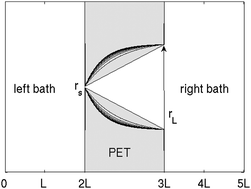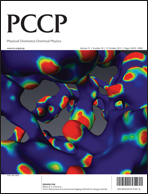Rectification properties of conically shaped nanopores: consequences of miniaturization
Abstract
Nanopores attracted a great deal of scientific interest as templates for biological sensors as well as model systems to understand transport phenomena at the nanoscale. The experimental and theoretical analysis of nanopores has been so far focused on understanding the effect of the pore opening diameter on ionic transport. In this article we present systematic studies on the dependence of ion transport properties on the pore length. Particular attention was given to the effect of ion current rectification exhibited in conically shaped nanopores with homogeneous surface charges. We found that reducing the length of conically shaped nanopores significantly lowered their ability to rectify ion current. However, rectification properties of short pores can be enhanced by tailoring the surface charge and the shape of the narrow opening. Furthermore we analyzed the relationship of the rectification behavior and ion selectivity for different pore lengths. All simulations were performed using MsSimPore, a software package for solving the Poisson–Nernst–Planck (PNP) equations. It is based on a novel finite element solver and allows for simulations up to surface charge densities of −2 e per nm2. MsSimPore is based on 1D


 Please wait while we load your content...
Please wait while we load your content...